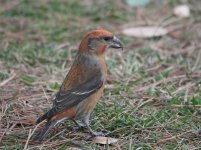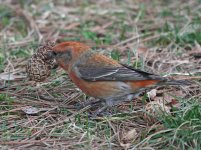Helsinki Birder
Stealth Birder

Im trying to make out the uppertail coverts on this bird, which should be strongly dark centered for 2 barred if im not mistaken?
They dont seem to be too dark, though it is often underestimated just how subtle and variable this species can in fact be.
Owen
They dont seem to be too dark, though it is often underestimated just how subtle and variable this species can in fact be.
Owen






